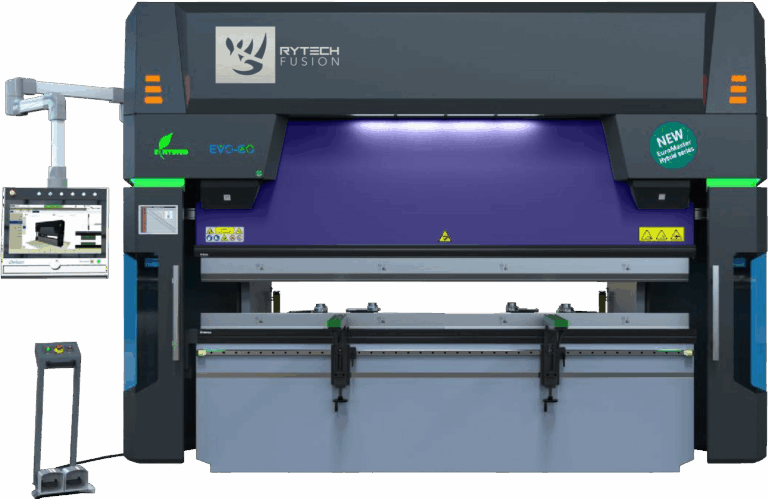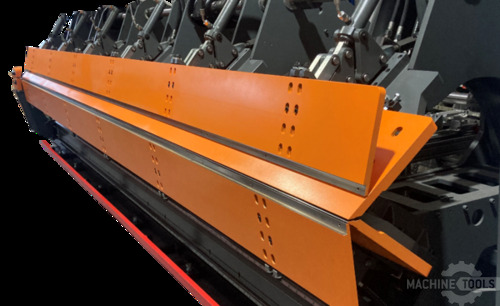Leveraging Decades of Experience: Pat O’Neill’s Approach to Shop Efficiency in Metal Fabrication
My journey from the south side of Chicago to my current role at Mac-Tech has been driven by a simple principle: put the customer first. Over decades in the sheet metal and roofing industries, I’ve seen firsthand how the right equipment can transform a business. Now, as Regional Sales Executive at Mac-Tech, I work with fabricators and roofing professionals across the Midwest and beyond, helping them navigate the ever-evolving landscape of production technology. Whether it’s evaluating folders, shears, slitters, decoilers, or exploring the latest in panel benders and downspout roll formers, my goal is to match each shop with the solutions that bring real-world results—more productivity, less waste, and tighter tolerances.
Evaluating Manual Brakes: Balancing Precision, Speed, and Waste Reduction
Manual brakes remain a staple in many fabrication shops, prized for their simplicity and reliability. They’re often the first step for smaller operations or for those who need flexibility with short runs and custom profiles. However, as production volumes increase or part complexity grows, the limitations of manual brakes become apparent.
Precision varies with operator skill, and maintaining consistent bends over long runs can be challenging. Speed is inherently limited by manual operation, and each setup change introduces the risk of human error and material waste. While manual brakes excel in low-volume, high-mix environments, shops with growing demand often find themselves facing bottlenecks and increased scrap rates.
In my experience, the conversation around manual brakes isn’t about replacing them outright but understanding where they fit best. For quick jobs, prototyping, or unique profiles, they’re indispensable. But when it comes to scaling up, it’s essential to look at the bigger picture—particularly how automation can reduce labor costs and improve consistency.
Transitioning to CNC Folding Systems: Unlocking Productivity and Consistency
CNC folding systems represent a significant leap forward for shops ready to boost throughput and reduce manual intervention. The most immediate advantage is automation: with programmable controls, even complex bends become repeatable and accurate, regardless of operator experience. This not only tightens tolerances but also slashes setup times and virtually eliminates rework.
Beyond precision, CNC folders open the door to higher productivity. One operator can often run multiple machines or manage longer parts with minimal handling. Automated tool changers, servo-driven backgauges, and advanced safety features further streamline production. For shops feeding material from coils, integrating a CNC folder with a slitter or decoiler creates a seamless, high-output line that can keep up with demanding project schedules.
The investment in CNC technology is justified not just by speed but by the ability to take on more jobs, reduce labor dependency, and deliver consistent quality to customers. In today’s competitive market, that’s the edge many shops need to stay ahead.
1990 Accurpress 7606
- Capacity: 60 T x 72″
- Weight: 6,000 lbs.
- Dimensions: 84″L x 40″W x 70″ H
- Ram stroke: 8″
1992 Accurpress 750024
Addressing Core Fabrication Needs: Slitting, Forming, and Folding for Coil-Fed Production
For operations working with coil stock, the interplay between slitting, forming, and folding is critical. Efficient slitting systems ensure material is cut to precise widths, minimizing waste and maximizing yield from each coil. High-quality decoilers keep lines moving, while advanced folders handle the forming process with speed and accuracy.
At Mac-Tech, I help customers design integrated production lines that match their business goals. For example, a roofing shop upgrading from manual brakes to a coil-fed CNC folding system can expect dramatic improvements in throughput and material utilization. Automated lines reduce handling, cut down on errors, and allow for real-time adjustments to meet changing job requirements.
The right combination of equipment not only addresses current needs but also positions a shop for future growth. Whether it’s adding a panel bender to handle architectural details or upgrading slitters for broader material compatibility, it’s about building a foundation for long-term success.
Upgrading Equipment for Maximum Throughput: Practical Steps to Optimize Shop Performance
Optimizing shop performance starts with a clear assessment of current bottlenecks and future goals. I encourage customers to audit their workflows: Where are delays occurring? What’s the cost of rework or scrap? How much time is spent on setups and material handling?
From there, we look at targeted upgrades. Sometimes it’s as simple as adding an automated backgauge to an existing brake. Other times, the jump to a CNC folder or a new slitting line makes the most sense. My role is to provide honest, data-driven recommendations—whether it’s a phased upgrade or a complete line overhaul.
Training is also key. Even the best equipment needs skilled operators. I support customers with onsite demos, application reviews, and ongoing technical support to ensure they get the most from their investment. The result is a shop that runs smoother, delivers higher quality, and is ready to take on bigger opportunities.
Frequently Asked Questions
When is the right time to upgrade a roll former or folder?
If you’re noticing frequent downtime, rising maintenance costs, or your current equipment can’t keep up with volume or part complexity, it’s time to evaluate an upgrade. I recommend a thorough ROI analysis and a conversation about your growth plans before making a decision.
How do servo-driven folders compare to hydraulic systems?
Servo-driven folders offer faster cycle times, quieter operation, and more precise control, especially for complex bends or high-volume runs. They also tend to require less maintenance than traditional hydraulic systems, making them ideal for shops focused on long-term efficiency.
What’s the difference between a combi-beam and double folder?
A combi-beam folder allows you to switch between different tooling profiles quickly, which is great for high-mix production. A double folder can bend both up and down without flipping the part, dramatically increasing speed and reducing handling for certain profiles. I help customers choose based on their most common part geometries.
What are signs a roll forming line is no longer cost-effective?
Look for increasing scrap rates, frequent jams, long setup times, and difficulty maintaining part quality. If your line can’t handle new materials or profiles required by your customers, it’s probably time to consider an upgrade.
How can automation impact labor requirements in a fabrication shop?
Automation can significantly reduce the number of operators needed per shift, allowing you to reallocate skilled labor to higher-value tasks or expand production without increasing headcount.
Do I need to replace all my equipment at once to see improvements?
Not necessarily. Many shops benefit from phased upgrades. We often start with the biggest bottleneck—whether that’s a brake, slitter, or folder—and build from there as your needs evolve and ROI is realized.
What support does Mac-Tech offer after installation?
We provide training, application support, and ongoing service to ensure your team is comfortable and your equipment continues to deliver value. My commitment is to your long-term success, not just the initial sale.
Ready to see what the next step could look like for your shop? I’d be happy to walk you through a demo, review your current line, or put together a quote tailored to your needs. Let’s connect and boost your shop’s efficiency together.
Get Weekly Mac-Tech News & Updates








